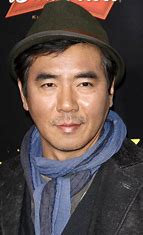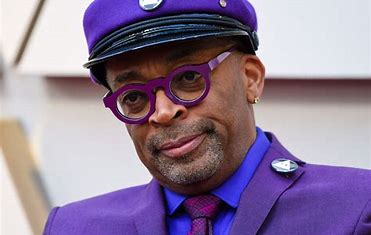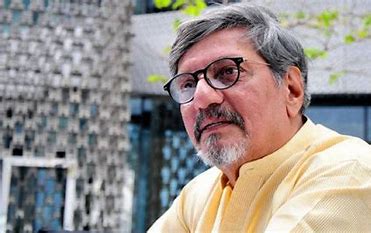Introduction
Kim Jee Woon is a South Korean film director known for his unique style that blends genres and creates unforgettable cinematic experiences. In this blog post, we will explore some of his most notable films with the help of two experts – Erika Lippoldt and Jae Woo Kim.
The Good, The Bad, The Weird

The Good, The Bad, The Weird is a 2008 action-comedy film that takes place in 1930s Manchuria. The film follows three main characters – the Good, the Bad, and the Weird – as they search for a treasure map. Erika Lippoldt notes that the film is an homage to the spaghetti western genre and incorporates elements of Korean cinema. She also praises the film’s thrilling action sequences and memorable characters.
Memorable Scenes
One of the most memorable scenes in the film is the train robbery sequence. The scene is expertly choreographed and showcases the film’s unique blend of action and comedy. Another standout scene is the final showdown between the three main characters, which takes place in a deserted town and features an epic gunfight.
A Tale of Two Sisters
A Tale of Two Sisters is a 2003 psychological horror film that follows two sisters who return home from a mental institution to live with their father and cruel stepmother. Jae Woo Kim notes that the film is known for its intricate plot and use of symbolism. He also praises the film’s haunting atmosphere and unsettling soundtrack.
Symbolism and Themes
The film is full of symbolism, with each character representing different aspects of the human psyche. The stepmother, for example, represents repression and denial, while the younger sister represents innocence and vulnerability. The film also explores themes of trauma and mental illness, making it a thought-provoking and emotionally resonant viewing experience.
I Saw the Devil
I Saw the Devil is a 2010 thriller film that follows a secret agent who seeks revenge on a serial killer who murdered his fiancée. Erika Lippoldt notes that the film is a brutal and unflinching exploration of violence and revenge. She also praises the film’s stunning cinematography and excellent performances.
The Nature of Revenge
The film raises questions about the nature of revenge and whether it is ever truly satisfying. The protagonist’s quest for revenge ultimately leads him down a dark and dangerous path, and the film’s ending leaves the audience questioning whether justice has truly been served.
The Age of Shadows
The Age of Shadows is a 2016 spy thriller set in 1920s Korea during the Japanese occupation. Jae Woo Kim notes that the film is a tense and gripping exploration of loyalty and betrayal. He also praises the film’s period detail and impressive action sequences.
Exploring Complex Characters
The film’s characters are complex and morally ambiguous, with each character’s loyalties constantly shifting throughout the film. The protagonist, for example, is torn between his loyalty to his country and his sympathy for the resistance movement. The film’s exploration of these complex characters makes for a compelling and thought-provoking viewing experience.
The Last Stand
The Last Stand is a 2013 action film starring Arnold Schwarzenegger as a small-town sheriff who must stop a drug cartel from crossing the border into Mexico. Erika Lippoldt notes that the film is a fun and exciting throwback to classic action movies. She also praises Schwarzenegger’s performance and the film’s impressive stunts.
A Classic Action Movie
The Last Stand is a film that doesn’t take itself too seriously, with plenty of over-the-top action and one-liners. The film’s final showdown is particularly memorable, with Schwarzenegger facing off against the villain in a thrilling car chase and shootout. Overall, The Last Stand is a fun and entertaining film that is sure to please fans of classic action movies.
FAQ
Who is Kim Jee Woon?
Kim Jee Woon is a South Korean film director and screenwriter, known for his work in the horror, thriller, and action genres. Some of his notable films include “A Tale of Two Sisters,” “The Good, the Bad, the Weird,” and “I Saw the Devil.”
What is the purpose of exploring the films of Kim Jee Woon?
The purpose of exploring the films of Kim Jee Woon is to gain a deeper understanding and appreciation of his unique style and approach to filmmaking. It allows fans and film enthusiasts to delve into the themes, techniques, and storytelling methods used in his films.
Who are Erika Lippoldt and Jae Woo Kim?
Erika Lippoldt and Jae Woo Kim are film critics and enthusiasts who have a passion for Korean cinema. They have written extensively on the subject and have provided insightful analysis and commentary on the films of Kim Jee Woon.
What are some of the themes explored in Kim Jee Woon’s films?
Kim Jee Woon’s films often explore themes of violence, revenge, trauma, and psychological horror. He is known for his use of suspense, tension, and visual storytelling to create a sense of unease and dread in his audiences.
What are some of the standout films in Kim Jee Woon’s filmography?
Some of the standout films in Kim Jee Woon’s filmography include “A Tale of Two Sisters,” “The Good, the Bad, the Weird,” “I Saw the Devil,” and “The Age of Shadows.” Each of these films showcases his unique style and approach to filmmaking, and has received critical acclaim both in Korea and internationally.



